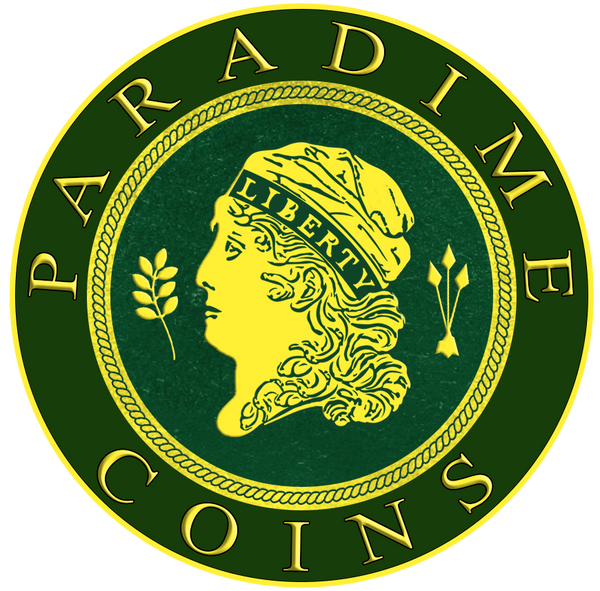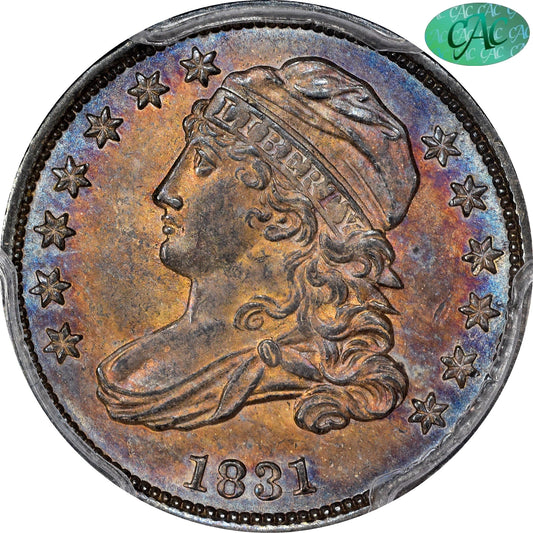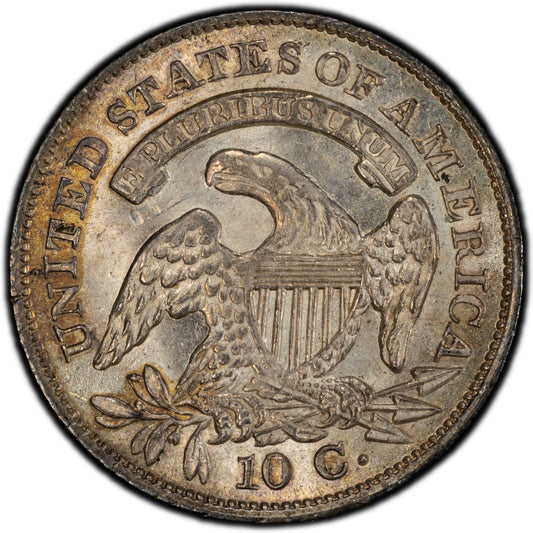Collection: Capped Bust Dime (1809 - 1837)
-
1831 10C MS65 PCGS CAC
Regular price $8,750.00Regular priceUnit price / per
The Capped Bust Dime, designed by John Reich, reflects a significant chapter in early U.S. coinage. Introduced in 1809, this series followed the Flowing Hair and Draped Bust dimes, combining bold design and improved minting technology. Spanning nearly three decades, these coins offer collectors rich historical and numismatic appeal.
Key Specifications
... Read MoreThe Capped Bust Dime, designed by John Reich, reflects a significant chapter in early U.S. coinage. Introduced in 1809, this series followed the Flowing Hair and Draped Bust dimes, combining bold design and improved minting technology. Spanning nearly three decades, these coins offer collectors rich historical and numismatic appeal.
Key Specifications
- Designer: John Reich
- Issue Dates: 1809–1837
- Composition: 89.24% silver, 10.76% copper
- Diameter: 18.8 mm (Type 1); 17.9 mm (Type 2)
- Weight: 2.69 grams (41.51 grains)
- Edge: Reeded
Design Evolution
Type 1: Large Size (1809–1827)
- Obverse: Miss Liberty wearing a cloth cap inscribed LIBERTY, with flowing tresses and a draped bust. Seven stars flank the left, and six stars flank the right, with the date below.
- Reverse: Eagle perched on a branch and arrows, with E PLURIBUS UNUM on a scroll above and the denomination 10 C. below.
- Distinct Features: Wider diameter and an open collar minting technique, resulting in a broader, less distinct rim.
Type 2: Small Size (1828–1837)
- Obverse and Reverse: Similar to Type 1 with minor adjustments, including a slightly smaller diameter, sharper borders, and refined denticle spacing.
- Minting Technique: Transitioned to a closed collar, producing coins with a uniform diameter and edge.
Rarities and Varieties
Key Dates and Varieties
- 1822: The rarest date of the series, highly sought after in all grades.
- 1828 Large Date vs. Small Date: Features subtle differences in font style and denticle spacing.
- 1829 Curl Base 2: An elusive variety with distinct numeral styling.
- Overdates: Notable examples include 1811/09, 1823/2, 1824/2, and the rare 1830/29.
Interesting Errors
- STATESOFAMERICA Variety: Found on certain 1814 and 1820 dimes, displaying a unique lack of spacing in the legend.
- Minor Design Adjustments: Variations in star size, numeral shapes, and denticle spacing, adding depth to the series for specialized collectors.
Collectibility and Grading
Grades and Availability
- Common Grades: Most coins are available in grades from Good to Very Fine, with Extremely Fine pieces slightly scarcer.
- High-Grade Rarities: Uncirculated coins are rare, and Mint State (MS-63 or higher) examples are exceedingly elusive.
Popular Among Collectors
- Type Set Collectors: Focus on acquiring one coin from each major type (Large Size and Small Size).
- Date Collectors: Pursue full date sets, including overdates and varieties, for a rewarding challenge.
Historical Highlights
Minting Breaks and Technology Advances
The Capped Bust Dime saw interruptions in production during its run, particularly before 1827. The transition from open to closed collars in 1828 marked a significant technological improvement, standardizing the minting process and producing coins with sharper details.
Capped Bust Design’s Legacy
The Capped Bust motif, first used on half dollars in 1807, became a defining design for U.S. coinage in the early 19th century. Its intricate details and bold imagery symbolize the artistic aspirations of the era.
Why Collect Capped Bust Dimes?
The Capped Bust Dime series offers collectors a glimpse into early American minting innovation and artistry. With its rich variety of dates, overdates, and design modifications, this series is a cornerstone for both beginner and advanced numismatists.
Explore Capped Bust Dimes at ParadimeCoins.com
Unlock the history of the Capped Bust Dime with ParadimeCoins.com. From rare varieties to high-grade examples, we offer a curated selection to suit every collector's needs. Start your journey into early American coinage today!
... Read Less








